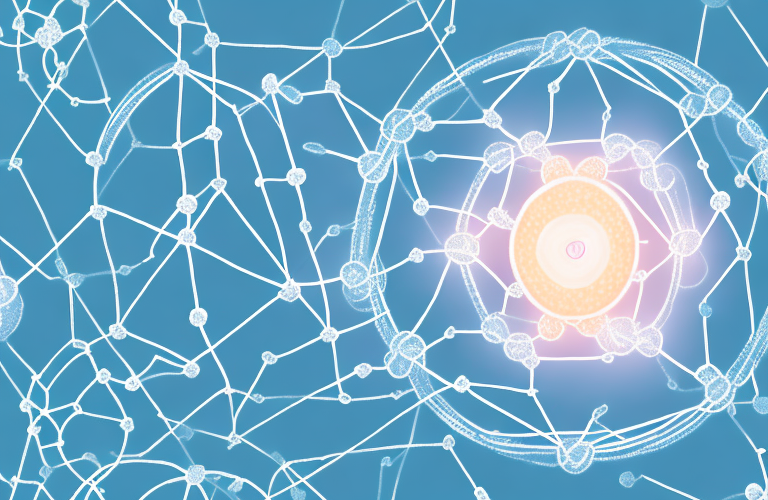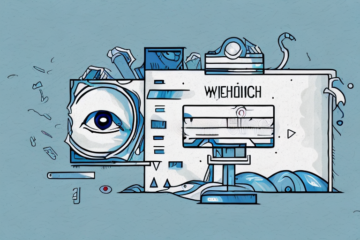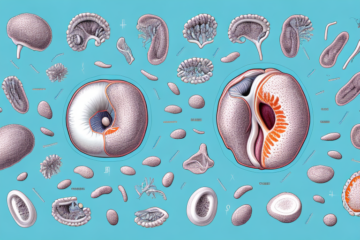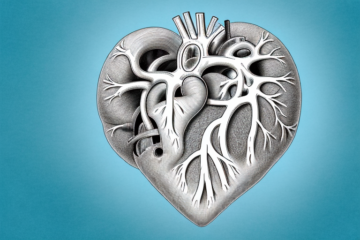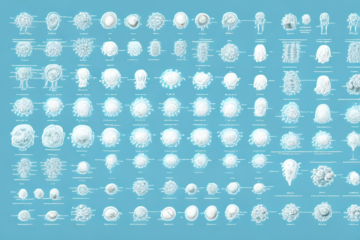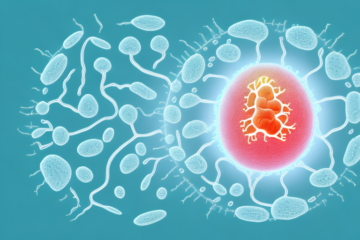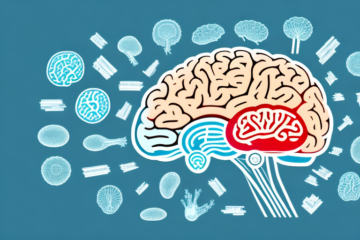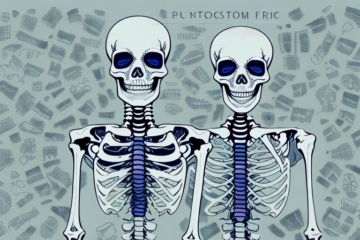Light Chain Proximal Tubulopathy (LCPT) is a rare disease affecting the kidneys. It occurs when abnormal proteins, known as light chains, build up in the kidneys and cause damage to the proximal tubules, the small tubes in the kidneys that reabsorb proteins and nutrients from the blood. This build-up can lead to kidney failure and other serious complications if left untreated. In this article, we will explore the symptoms, causes, treatment options, and more related to Light Chain Proximal Tubulopathy.
Understanding Light Chain Proximal Tubulopathy: A Comprehensive Guide
LCPT is a rare disease that affects the kidneys. It is caused by the abnormal buildup of light chains in the kidneys, which can cause damage to the proximal tubules. This damage can lead to a variety of symptoms and complications, including renal failure. While this condition is rare, it is important to understand the symptoms, causes, and treatment options for those affected.
Recent research has shown that LCPT may be associated with certain types of blood cancers, such as multiple myeloma. Therefore, it is important for patients diagnosed with LCPT to undergo further testing to rule out any underlying blood disorders. Treatment options for LCPT include medications to reduce the buildup of light chains in the kidneys, as well as dialysis or kidney transplant for those with advanced kidney damage. It is crucial for patients with LCPT to work closely with their healthcare team to manage their condition and prevent further complications.
What is Light Chain Proximal Tubulopathy and How Does it Develop?
Light Chain Proximal Tubulopathy is a rare kidney disease caused by the build-up of abnormal proteins, called light chains, in the kidneys. These light chains come from plasma cells, the white blood cells responsible for producing antibodies that help fight off infections. When these cells become cancerous, they can produce an excess of light chains that can bind together and cause damage to the kidneys.
Light Chain Proximal Tubulopathy can be difficult to diagnose, as its symptoms are similar to those of other kidney diseases. These symptoms include fatigue, weakness, loss of appetite, and swelling in the legs and feet. In some cases, patients may also experience nausea, vomiting, and high blood pressure.
Treatment for Light Chain Proximal Tubulopathy typically involves chemotherapy to target the cancerous plasma cells and reduce the production of light chains. In some cases, patients may also require dialysis or a kidney transplant to manage the damage caused by the disease. Early diagnosis and treatment are crucial for improving the prognosis of this rare kidney disease.
The Role of Light Chains in the Development of Proximal Tubulopathy
The abnormal accumulation of light chains in the kidney is the hallmark of Light Chain Proximal Tubulopathy. These light chains can cause damage to the proximal tubules, leading to the development of this rare kidney disease. Researchers are still studying the exact mechanism of how these light chains cause damage to the kidney.
Recent studies have shown that the accumulation of light chains in the kidney can activate the immune system, leading to inflammation and further damage to the proximal tubules. This suggests that targeting the immune response may be a potential therapeutic approach for treating Light Chain Proximal Tubulopathy.
Common Symptoms of Light Chain Proximal Tubulopathy You Need to Know
Some of the common symptoms of LCPT include fatigue, weakness, muscle cramps, swelling in the feet and ankles, decreased urine output, and problems with concentration and memory. These symptoms can vary from person to person and may not be present in all cases. It is important to see a doctor if you are experiencing any symptoms of LCPT.
LCPT is a rare disease that affects the kidneys and can lead to kidney failure if left untreated. It is caused by the buildup of abnormal proteins in the kidneys, which can damage the tubules and impair their function. Early diagnosis and treatment are crucial to prevent further damage to the kidneys.
There is currently no cure for LCPT, but treatment options are available to manage the symptoms and slow down the progression of the disease. These may include medications to reduce protein buildup, dialysis to remove excess waste from the blood, and kidney transplant in severe cases. It is important to work closely with your doctor to determine the best course of treatment for your individual needs.
Causes and Risk Factors for Developing Light Chain Proximal Tubulopathy
The exact causes of Light Chain Proximal Tubulopathy are still unknown. However, researchers have identified several risk factors that can increase the likelihood of developing this rare kidney disease. These risk factors include exposure to toxins, a weakened immune system, and certain genetic mutations. Other factors, such as aging and gender, may also play a role.
Recent studies have also suggested that there may be a link between Light Chain Proximal Tubulopathy and certain medications, such as nonsteroidal anti-inflammatory drugs (NSAIDs) and proton pump inhibitors (PPIs). These medications have been shown to cause kidney damage in some individuals, which may increase the risk of developing this disease. It is important for individuals taking these medications to monitor their kidney function and discuss any concerns with their healthcare provider.
How is Light Chain Proximal Tubulopathy Diagnosed?
To diagnose Light Chain Proximal Tubulopathy, doctors will typically perform a series of tests, including blood and urine tests, and imaging studies such as CAT scans or MRIs. They may also perform a kidney biopsy to confirm the diagnosis. It is important to seek medical attention immediately if you are experiencing any symptoms of LCPT.
Some common symptoms of LCPT include fatigue, weakness, and swelling in the legs and ankles. Patients may also experience frequent urination, especially at night, and may notice blood in their urine. If you are experiencing any of these symptoms, it is important to speak with your doctor as soon as possible to determine the underlying cause and begin appropriate treatment.
Treatment Options for Light Chain Proximal Tubulopathy: A Complete Overview
There are several treatment options available for Light Chain Proximal Tubulopathy. These include medications, therapies, and lifestyle changes. The goal of treatment is to slow down the progression of the disease and manage symptoms. In some cases, kidney dialysis or transplantation may be needed.
One of the most common medications used to treat Light Chain Proximal Tubulopathy is corticosteroids. These drugs work by reducing inflammation in the kidneys and suppressing the immune system. Other medications that may be prescribed include immunosuppressants, chemotherapy drugs, and monoclonal antibodies. Therapies such as plasma exchange and stem cell transplantation may also be considered in certain cases.
Medications and Therapies Used to Treat Light Chain Proximal Tubulopathy
Some of the medications used to treat Light Chain Proximal Tubulopathy include corticosteroids, chemotherapy drugs, and immunosuppressive medications. These medications are used to reduce the production of light chains and slow down the progression of the disease. Therapies such as plasmapheresis and immunoglobulin replacement therapy may also be used to manage symptoms.
In addition to medication and therapy, lifestyle changes can also be helpful in managing Light Chain Proximal Tubulopathy. Patients are advised to maintain a healthy diet, exercise regularly, and avoid smoking and excessive alcohol consumption. It is also important to monitor kidney function regularly and to seek medical attention if any new symptoms arise.
Lifestyle Changes That Can Help Manage Light Chain Proximal Tubulopathy
While there is no cure for Light Chain Proximal Tubulopathy, certain lifestyle changes can help manage the symptoms of this rare kidney disease. These changes include maintaining a healthy diet and exercise routine, staying hydrated, and avoiding exposure to toxins. It is important to work closely with a healthcare professional to develop a personalized treatment plan that best fits your needs.
In addition to lifestyle changes, medication may also be prescribed to help manage the symptoms of Light Chain Proximal Tubulopathy. These medications may include immunosuppressants, corticosteroids, and chemotherapy drugs. It is important to follow the medication regimen prescribed by your healthcare professional and to report any side effects or concerns.
Coping with the Emotional Toll of Living with Light Chain Proximal Tubulopathy
Living with Light Chain Proximal Tubulopathy can be emotionally challenging. It can take a toll on your mental and emotional health, and it is important to get the support you need. Joining a support group or talking with a mental health professional can help you cope with the emotional aspects of living with LCPT.
In addition to seeking support from others, it is also important to take care of yourself. This can include practicing self-care activities such as meditation, exercise, or spending time in nature. It is also important to communicate with your healthcare team about any emotional struggles you may be experiencing, as they may be able to provide additional resources or support.
Prevention Strategies for Avoiding Light Chain Proximal Tubulopathy
There are currently no known prevention strategies for Light Chain Proximal Tubulopathy. However, certain lifestyle changes, such as maintaining a healthy diet, staying hydrated, and avoiding exposure to toxins, may help reduce the risk of developing this rare kidney disease.
It is also important for individuals with a family history of kidney disease to undergo regular check-ups and screenings to detect any potential issues early on. Additionally, managing underlying conditions such as multiple myeloma, Waldenstrom’s macroglobulinemia, and amyloidosis can also help prevent the development of Light Chain Proximal Tubulopathy.
In cases where Light Chain Proximal Tubulopathy has already been diagnosed, treatment options may include chemotherapy, immunotherapy, and dialysis. It is important for individuals with this condition to work closely with their healthcare team to develop a personalized treatment plan and to closely monitor their kidney function to prevent further damage.
Latest Research and Advancements in the Treatment of Light Chain Proximal Tubulopathy
Researchers are constantly working to develop new treatments and advancements in the treatment of Light Chain Proximal Tubulopathy. Some of the latest research includes the development of new medications that target the abnormal proteins responsible for LCPT, as well as advancements in kidney transplantation techniques.
In conclusion, Light Chain Proximal Tubulopathy is a rare kidney disease that can cause serious complications if left untreated. It is important to understand the symptoms, causes, and treatment options available for those affected. By working closely with a healthcare professional, making lifestyle changes, and staying informed about the latest research and advancements, individuals with LCPT can manage their symptoms and improve their quality of life.
Recent studies have also shown promising results in the use of stem cell therapy for the treatment of LCPT. This therapy involves the use of stem cells to repair damaged kidney tissue and improve kidney function. While still in the early stages of research, stem cell therapy has shown potential as a safe and effective treatment option for LCPT.

